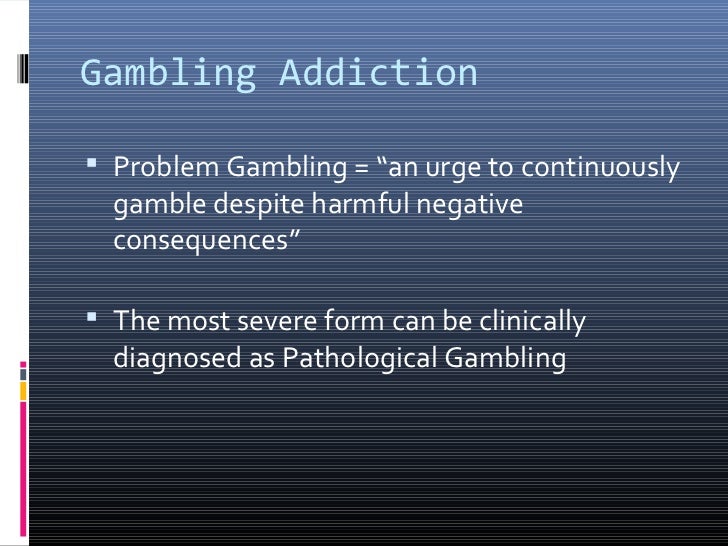
GD can severely impact on personal and vocational wellbeing as well as lead to financial problems. Generally, the prevalence of GD has been shown to be 1.2–7.1% in the general population. This diagnostic change reflects longstanding conceptualizations of GD as an addiction. In DSM-5, the most recent version, pathological gambling was re-categorized into the group of substance-related and addictive disorders and renamed GD.

#Pathological gambling manual#
The American Psychiatric Association regarded “pathological gambling” as an impulse control disorder in the fourth edition of the Diagnostic and Statistical Manual of Mental Disorders (DSM-IV). Gambling disorder (GD) is defined as “persistent and recurrent problematic gambling behavior leading to clinically significant impairment or distress.” Unlike the long history of substance addiction, GD has rarely been studied as a disease. In addition, it can be used as a reference for designing future research. This review can help clinicians to decide treatment plans for their GD patients. We also introduce relatively novel treatment modalities. Psychosocial treatments/strategies mainly include cognitive behavioral therapy, motivational interviewing, and Gamblers Anonymous. The description of pharmacotherapy mainly focuses on opioid receptor antagonists, selective serotonin reuptake inhibitors, and mood stabilizers. This review refers to newly as well as previously published studies and guidelines. This review describes the available pharmacotherapy/psychosocial treatments for GD patients, and summarizes data on the effectiveness of these GD treatments.


GD can severely impact on personal and vocational wellbeing as well as lead to financial problems, and has been known to be difficult to treat. The prevalence of GD has been shown to be 1.2–7.1% in the general population. Gambling disorder (GD) is defined as persistent and recurrent problematic gambling behavior leading to clinically significant impairment or distress.


 0 kommentar(er)
0 kommentar(er)
